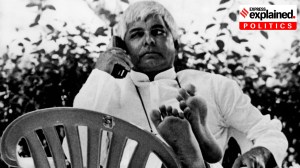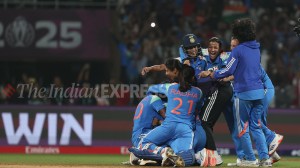Supreme Court set to deliver note ban verdict on January 2
A five-judge constitution bench presided by Justice S Abdul Nazeer had reserved the verdict on December 7 after hearing elaborate arguments by the petitioners, the Centre and the Reserve Bank of India.
 The top court reopens after winter recess on January 2.
The top court reopens after winter recess on January 2. The Supreme Court will deliver on January 2, 2023 its verdict on a batch of petitions challenging the government’s 2016 decision to demonetise Rs 500 and Rs 1,000 currency notes.
The top court reopens after winter recess on January 2.
A five-judge constitution bench presided by Justice S Abdul Nazeer had reserved the verdict on December 7 after hearing elaborate arguments by the petitioners, the Centre and the Reserve Bank of India.
The bench, also comprising Justices B R Gavai, A S Bopanna, V Ramasubramanian, and B V Nagarathna, had asked the government and RBI to produce the relevant records related to the decision-making process leading to the November 8, 2016 notification.
Justice Nazeer is set to retire on January 4, 2023.
Taking up the batch of 58 petitions challenging various aspects of the government, the SC had initially wondered if it had not become merely an academic debate given the passage of time. It subsequently decided to go into the issue, with the petitioners contending that the procedure prescribed in Section 26(2) of RBI Act. 1934, was given a go by.
The provision says that “on recommendation of the [RBI] Central Board, the Central Government may, by notification in the Gazette of India, declare that, with effect from such date…any series of bank notes of any denomination shall cease to be legal tender save at such office or agency of the Bank and to such extent as may be specified in the notification”.
Appearing for one of the petitioners, senior advocate P Chidambaram contended that as per the Section, the recommendation should have “emanated” from RBI, but in this case, the government had advised the central bank, following which it made the recommendation. He said when earlier governments had demonetised currency — in 1946 and 1978 — they had done so by way of a law made by Parliament.
Chidambaram also accused the government of withholding documents related to the decision from the court and raised doubts whether the quorum as required for the RBI Central Board meeting was met.
Countering the argument, senior advocate Jaideep Gupta, appearing for RBI, pointed out that “the Section does not talk about the process of initiation. It only says that the process will not end without the last two steps outlined in it…” He also said, “We (RBI) gave the recommendation…”
Attorney General R Venkataramani said demonetisation was not an isolated act but part of a broader economic policy, and therefore it is not possible for RBI or the government to act in isolation. “They act in consultation…” he submitted.
On the argument about previous demonetisation decisions, Gupta said RBI had not agreed to the proposals, following which the then government made the law. He also denied that any document was being withheld from the court.
The central bank also pointed out that the quorum as determined by RBI General Regulations, 1949, was met for the Central Board meeting. Besides then RBI Governor and two Deputy Governors, five directors nominated under provisions of RBI Act were present, it said. So the requirement that three of them should be nominated under the law “is met”, Gupta said.
Chidambaram had argued that under Section 26(2), the government cannot demonetise all series of notes of a denomination. He urged the court to read down the provision so that the expression “any” therein will be read as “some”.
Opposing this, Gupta said such an interpretation will create “nothing but confusion”.







